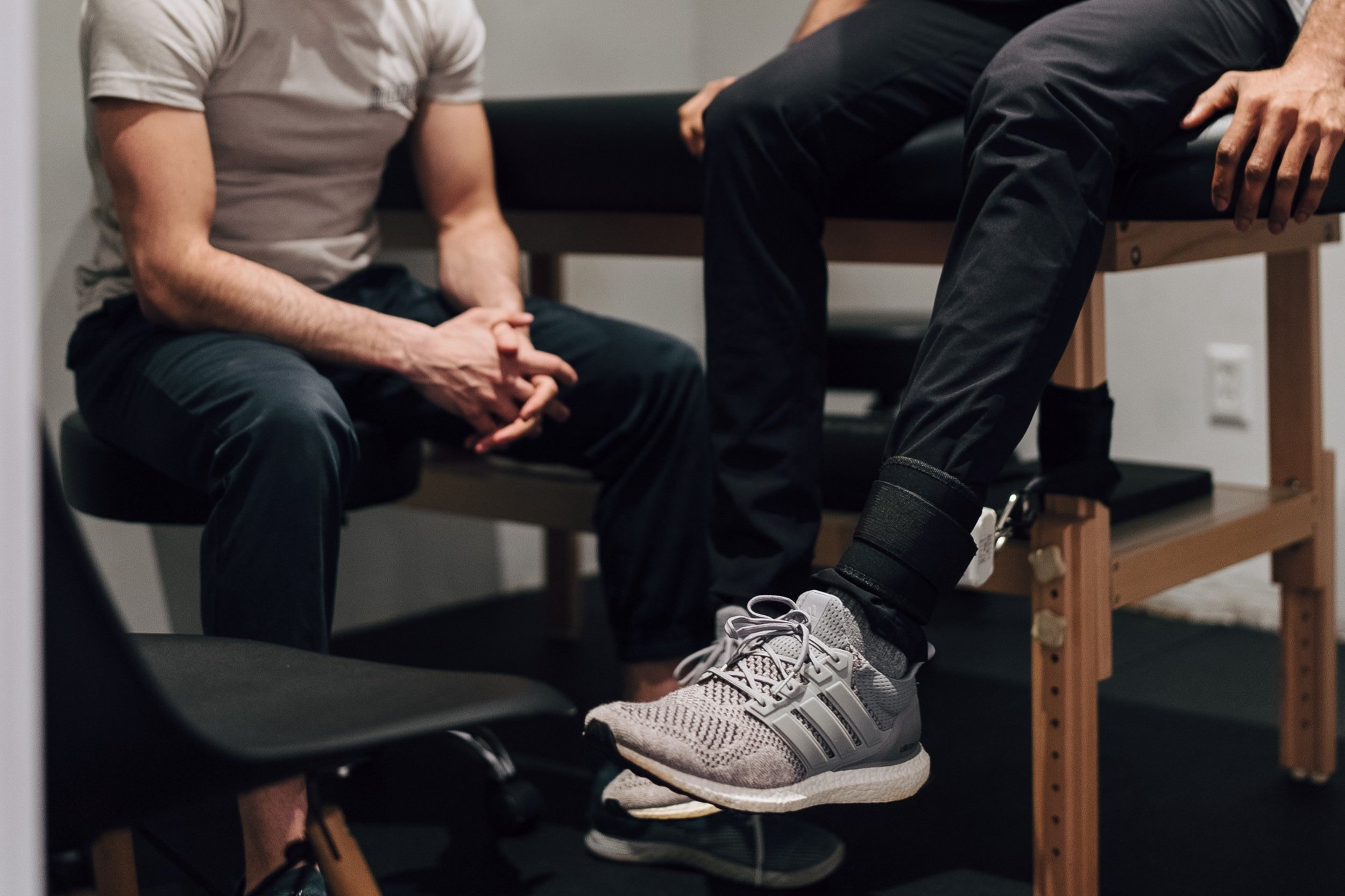Isolated strength testing and the missing piece in your ability to return to sport
We have worked with so many clients that should have NOT been cleared to return to sport - the reason that they have is oftentimes, due to a LACK of objective strength testing that needs to be prioritized in physical therapy and return to sport.
It is not surprising that a majority of people that walk through our door still have a HUGE - near 20-30% - strength deficit after having surgery and going through post-operative physical therapy.
And what's the problem with this huge deficit?
The research says that there should be a minimum of a 10% asymmetry of the unaffected limb compared to the affected limb, but we need to strive* for even less[1].
*The reason we strive for even less is that you’re likely deconditioned and less physically active post-surgery so your true baseline from the unaffected side is skewed*
You’re probably wondering…how did my physical therapist miss this!?
The majority of physical therapy clinics are ill-equipped to measure how much force your limbs can produce because they unaware that a lack of objective testing can be problematic and they don’t have the equipment to solve the problem.
If we can’t assess a specific quality, then there is no way to determine whether you have that quality - in this case, peak force. Specifically, in an instance of post-op care or return to sport, the last thing we want to guess is whether or not you are strong enough to progress to the next stage of rehab.
If one is lacking peak force capabilities then it will be nearly impossible to progress to more advanced exercises without increased compensatory strategies used to make up for that lack of strength - this compounds over time to a point where those strategies are adopted as a new way of moving and in turn, avoids loading the injured tissue[2].
This is where the problem occurs - weakness and mobility deficits develop which can then predispose you to a potential re-injury or a new injury[1, 2].
Here at Moment PTP, we have streamlined the process and we utilize the most advanced technology so we can understand exactly what you’re capable of and what you might be missing in order to progress forward in your rehab. Without the proper technology and knowledge behind it, we can never accurately say how much force a limb is producing - especially just by using our manual force and pushing on it with our hands.
Our process:
Isolate the joint angle that has been validated by the research[3, 4].
Push against a machine that can reliably tell us exactly how much force the tested limb can produce[3, 4].
Compare this to the unaffected limb and the normative standards from the research[5].
There are checkpoints throughout the rehab process, in terms of strength, that need to be cleared before progressing to higher-demand tasks like jogging, running, sprinting, multidirectional speed, and plyometrics[5]. The data that we get from thorough testing, guides our decision-making to ensure that our clients are always making progress and ALWAYS doing so in a safe way.
Our return to sport program is extremely thorough - we combine isolated strength testing with force plate testing that addresses more gross movements. That is used in conjunction with an aerobic program to build your cardio, advanced mobility techniques to optimize joint function, and a progressive strength training program to get you fitter, our return to sport fully encapsulates what you need to get into the best shape of your life.
If you’re an athlete that hasn’t felt like you are where you want to be with your rehab after surgery, you should have force testing be a part of your rehab. If you’re struggling to reach your performance goals, our SoHo Physical Therapy Clinic can help.
If you’re ready to get started with Physical Therapy — book a phone call below to take step 1
Citations:


